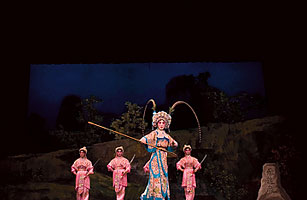
SHOWTIME AT THE SUNBEAM: A fantastical world for as little as $8
In its heyday, from the 1920s to the 1950s, Cantonese opera in Hong Kong generated annual attendances in the millions. But these days, because of competition from other forms of entertainment, no more than 300,000 people out of a population of nearly seven million attend regularly. Most of them can be found at the only dedicated venue left in the city — the Sunbeam Theatre, www.ua-sunbeam.com.
When its lease expires next January, the ensuing rent hike may bring down the curtain for good, forcing opera troupes to compete for limited slots elsewhere. "If the Sunbeam closes, many performers will change industries," says veteran opera singer Liza Wang. The message for travelers is get there while you can — as a cultural encounter, the Sunbeam is colorful and cheap. Tickets start at $8.
Cantonese opera traces its origins to the 13th century, and its modern form has long been considered more innovative than northern Chinese equivalents — not only because works are performed in Cantonese instead of Mandarin (a practice once banned for fear that it would encourage subversion) but also because of its use of slang and even Western instruments like guitars.
These days, unfortunately, the art form is about anything but change. It's mostly grannies that pack the Sunbeam's seats for daily performances. "This is a special place. It would be a shame if it closes," says 82-year-old Yeung Chan Yuk-gun, a regular since the theater first opened in 1972. And a shame if you don't savor this Hong Kong landmark while there's time.